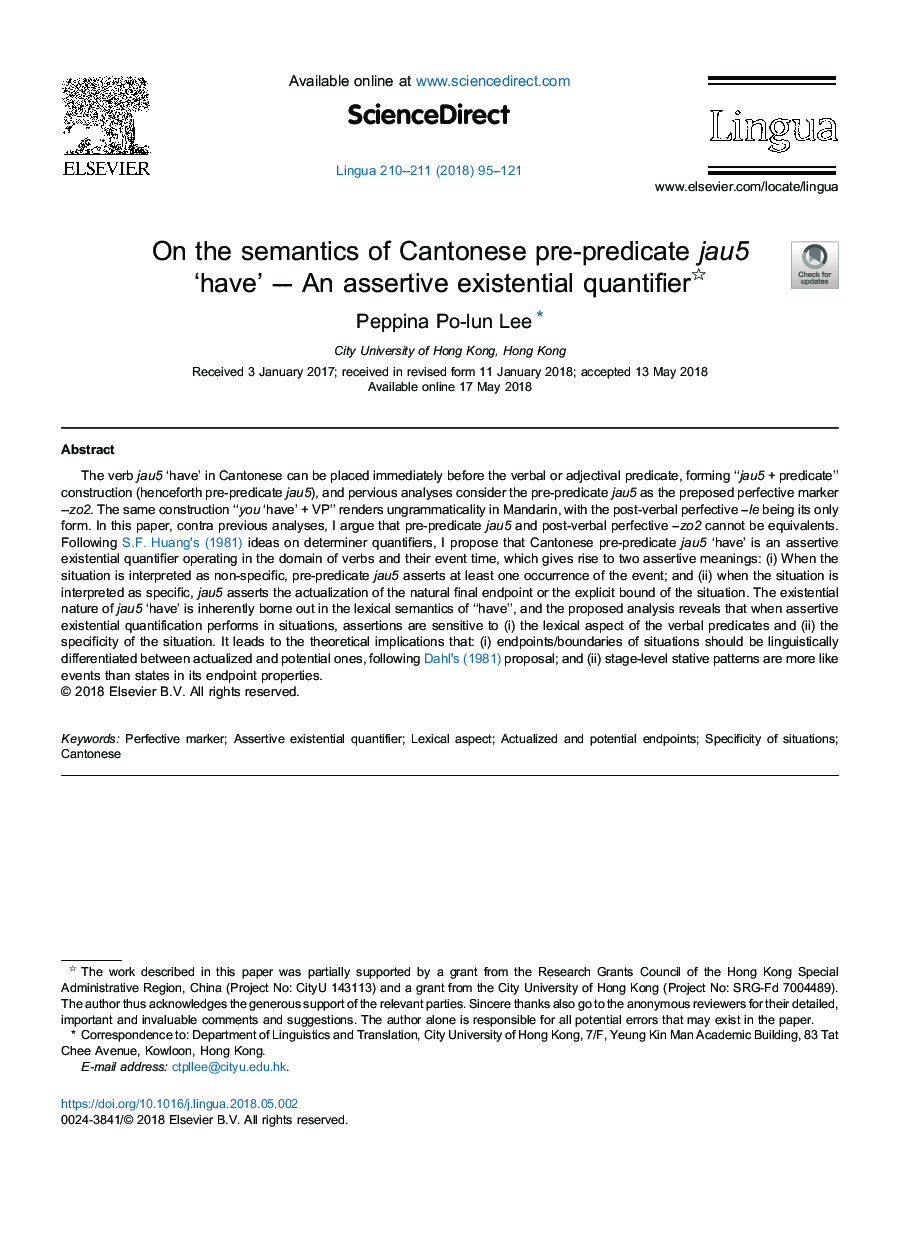| کد مقاله | کد نشریه | سال انتشار | مقاله انگلیسی | نسخه تمام متن |
|---|---|---|---|---|
| 7298326 | 1475008 | 2018 | 27 صفحه PDF | دانلود رایگان |
عنوان انگلیسی مقاله ISI
On the semantics of Cantonese pre-predicate jau5 'have' - An assertive existential quantifier
ترجمه فارسی عنوان
در معناشناسی پیش قدیس کانتونی، اختراع - 'وجود دارد' - یک کانسار وجودی تضعیف کننده
دانلود مقاله + سفارش ترجمه
دانلود مقاله ISI انگلیسی
رایگان برای ایرانیان
کلمات کلیدی
نشانگر کامل کوانتیزا حسی مطلق، جنبه ی لزومی، نقاط واقعی و بالقوه، خاصیت شرایط، کانتونی،
موضوعات مرتبط
علوم انسانی و اجتماعی
علوم انسانی و هنر
زبان و زبان شناسی
چکیده انگلیسی
The verb jau5 'have' in Cantonese can be placed immediately before the verbal or adjectival predicate, forming “jau5Â +Â predicate” construction (henceforth pre-predicate jau5), and pervious analyses consider the pre-predicate jau5 as the preposed perfective marker -zo2. The same construction “you 'have'Â +Â VP” renders ungrammaticality in Mandarin, with the post-verbal perfective -le being its only form. In this paper, contra previous analyses, I argue that pre-predicate jau5 and post-verbal perfective -zo2 cannot be equivalents. Following S.F. Huang's (1981) ideas on determiner quantifiers, I propose that Cantonese pre-predicate jau5 'have' is an assertive existential quantifier operating in the domain of verbs and their event time, which gives rise to two assertive meanings: (i) When the situation is interpreted as non-specific, pre-predicate jau5 asserts at least one occurrence of the event; and (ii) when the situation is interpreted as specific, jau5 asserts the actualization of the natural final endpoint or the explicit bound of the situation. The existential nature of jau5 'have' is inherently borne out in the lexical semantics of “have”, and the proposed analysis reveals that when assertive existential quantification performs in situations, assertions are sensitive to (i) the lexical aspect of the verbal predicates and (ii) the specificity of the situation. It leads to the theoretical implications that: (i) endpoints/boundaries of situations should be linguistically differentiated between actualized and potential ones, following Dahl's (1981) proposal; and (ii) stage-level stative patterns are more like events than states in its endpoint properties.
ناشر
Database: Elsevier - ScienceDirect (ساینس دایرکت)
Journal: Lingua - Volumes 210â211, JulyâAugust 2018, Pages 95-121
Journal: Lingua - Volumes 210â211, JulyâAugust 2018, Pages 95-121
نویسندگان
Peppina Po-lun Lee,
